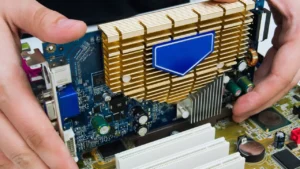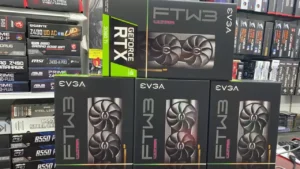If your GPU only works in the second PCIe slot, it could indicate a problem with the primary slot on your motherboard. This issue has been reported by many users across various forums and communities.
Some have found temporary solutions, such as updating BIOS or reinstalling drivers, but the underlying cause may still be a faulty PCIe slot.
It’s recommended to troubleshoot by testing the GPU in another system to determine if the problem persists. If it does, then the issue likely lies with the GPU itself. If not, then it’s likely a motherboard issue that may require professional diagnosis or replacement.
Possible Reasons for GPU Only Working in the Second Slot
There are two main culprits behind this situation: hardware compatibility issues and motherboard or CPU limitations.
- Hardware compatibility issues: Sometimes, a specific graphics card model might not play nicely with your motherboard’s primary PCIe slot. This could be due to a variety of reasons, like outdated BIOS versions or electrical compatibility quirks.
- Motherboard or CPU-related issues: The primary PCIe slot might be faulty, or the motherboard or CPU might not be providing enough resources for the GPU to function properly in the primary slot.
Solutions to Try When GPU Only Works in the Second Slot
Before diving into hardware modifications, let’s explore some software-based troubleshooting steps:
1. Check for BIOS updates: An outdated BIOS might not recognize your GPU correctly, especially for newer cards. Head over to your motherboard manufacturer’s website and download the latest BIOS update. Installing it might solve the compatibility issue.
2. Try different PCIe slots: This might seem obvious, but ensure the GPU is securely seated in the secondary PCIe slot. If it works there, try moving it back to the primary slot. Double-check for any physical damage to the PCIe slot or the card’s connector.
3. Ensure proper power supply: High-performance GPUs require a robust power supply. Verify that your PSU meets the wattage requirements for your graphics card. Consult your GPU’s manual and compare it to your PSU’s wattage rating. Additionally, make sure all necessary power cables are securely connected to both the PSU and the GPU.
If none of these software solutions work, then a hardware issue becomes more likely. Consider the following:
- Test with a different GPU: If another graphics card works in the primary slot, it points towards an incompatibility issue with your original GPU. You might need to check for BIOS updates specific to your GPU model or consider a different graphics card altogether.
- Consult your motherboard manual: The motherboard manual should detail the capabilities and limitations of each PCIe slot. Check if the primary slot offers more lanes (bandwidth) compared to the secondary one. While your GPU might function in the secondary slot, it might perform at a reduced capacity due to fewer lanes.
If the problem persists after trying these solutions, it’s recommended to seek further assistance from a technician or consult your motherboard or GPU manufacturer’s support channels. They might have specific troubleshooting steps or recommendations based on your hardware configuration.








